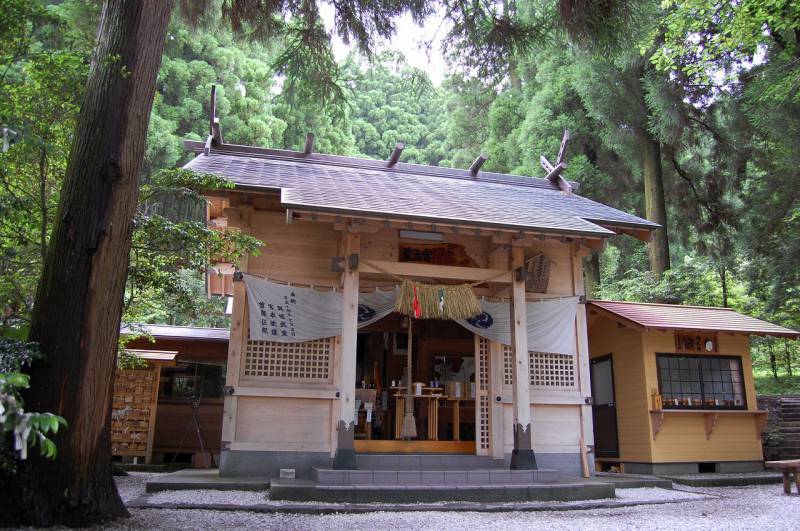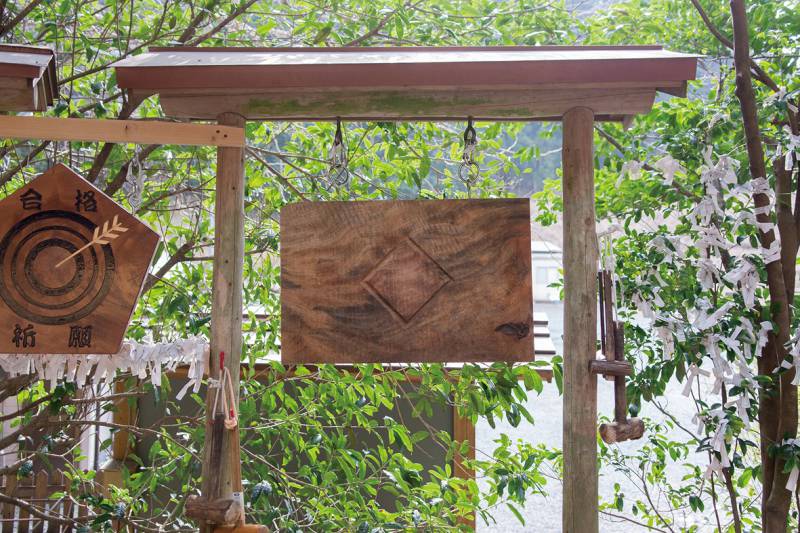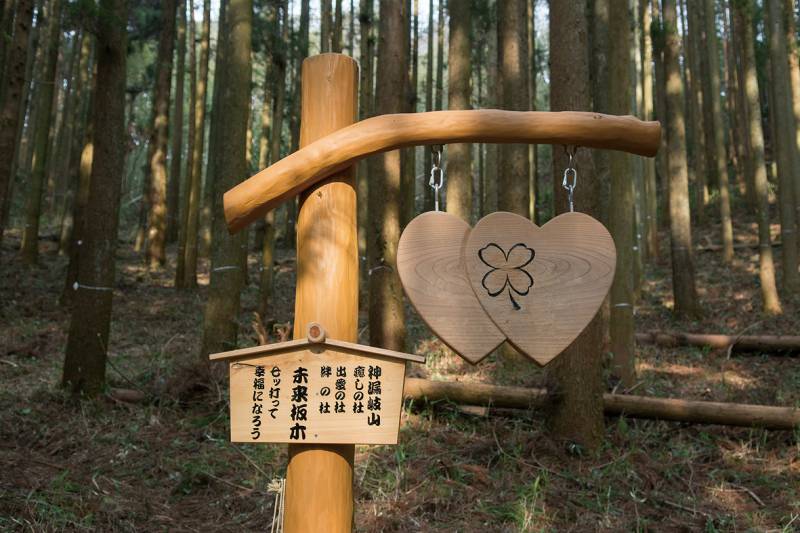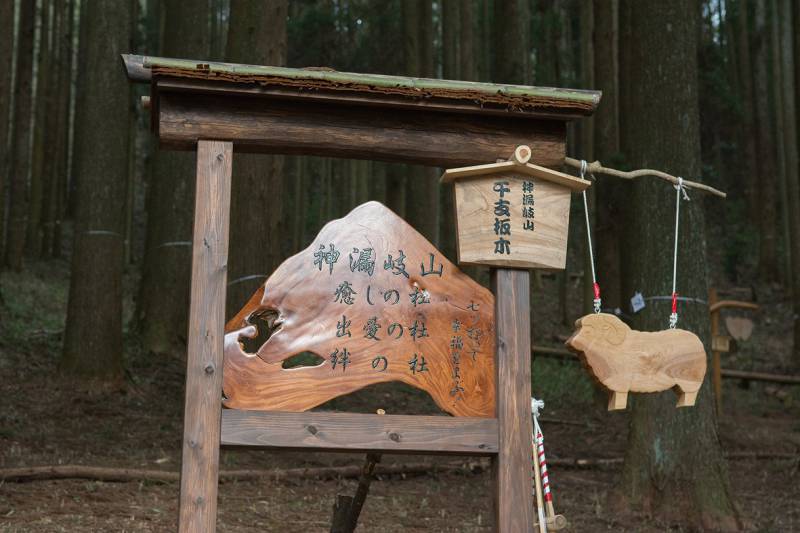2019 / 07 / 08
Sightseeing
Aratate Shrine
Aratate Shrine

Aratate Shrine is dedicated to the two kami deities, Ame no Uzume no Mikoto and Sarutahiko no Mikoto, and celebrates their marriage to each other. Ame no Uzume is known as a deity of song, dance, and the performing arts. Sarutahiko is known as a deity of guidance in travel and education, among other things. Together, they are kami deities of matrimonial happiness and fulfilled wishes.
The nature of this shrine draws followers with creative aspirations, including some well-known actors and actresses. Many who seek guidance in their careers or love life come here to pray and consult the priest.
The nature of this shrine draws followers with creative aspirations, including some well-known actors and actresses. Many who seek guidance in their careers or love life come here to pray and consult the priest.
Prayer Hall (Haiden)
Inside the prayer hall are two paintings that express the essence of this shrine.
One depicts the kami deity Ame no Uzume during a renowned performance. In a famous mythical tale, her dancing helped lure the sun kami out of hiding, saving the world from eternal darkness. This performance is said to be the origin of the Shinto theatrical dance, kagura, performed in Takachiho.
The second painting depicts the first meeting of Ame no Uzume and Sarutahiko. In Japanese mythology, the two are said to have met at a crossroads in the heavens. Sarutahiko, a massive earth kami deity, stood in the path of a procession of kami deities from the heavenly realm as they descended to govern the islands of Japan. Ame no Uzume, a heavenly deity said to be delicate but bold, confronted Sarutahiko to ask his name. It was then that Sarutahiko offered to guide the group of deities to earth.
Takachiho legend says that the couple was so struck by this first meeting that they decided to marry at once. In a rush (in Japanese: “ara-i”), they gathered up materials from the surrounding area, including raw and unseasoned timber (in Japanese: “ara-ki”), and built (in Japanese: “tate”) their new home. As a result, Aratate Shrine derives its name from the immediacy of their union and the crude materials of their residence.
One depicts the kami deity Ame no Uzume during a renowned performance. In a famous mythical tale, her dancing helped lure the sun kami out of hiding, saving the world from eternal darkness. This performance is said to be the origin of the Shinto theatrical dance, kagura, performed in Takachiho.
The second painting depicts the first meeting of Ame no Uzume and Sarutahiko. In Japanese mythology, the two are said to have met at a crossroads in the heavens. Sarutahiko, a massive earth kami deity, stood in the path of a procession of kami deities from the heavenly realm as they descended to govern the islands of Japan. Ame no Uzume, a heavenly deity said to be delicate but bold, confronted Sarutahiko to ask his name. It was then that Sarutahiko offered to guide the group of deities to earth.
Takachiho legend says that the couple was so struck by this first meeting that they decided to marry at once. In a rush (in Japanese: “ara-i”), they gathered up materials from the surrounding area, including raw and unseasoned timber (in Japanese: “ara-ki”), and built (in Japanese: “tate”) their new home. As a result, Aratate Shrine derives its name from the immediacy of their union and the crude materials of their residence.
Striking Boards (Bangi)
Various hanging wooden boards can be found around the shrine grounds, especially along the paths and within the grove. Mallets are provided, and it is said that hitting these boards seven times can bring about certain good fortunes. The shichifukutokuju board near the entrance may grant visitors’ deepest desires if they put their heart into each strike. Others may bring healing, opportunity, or love.







